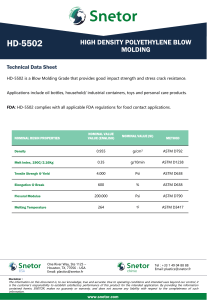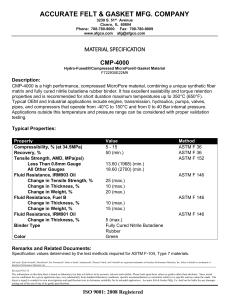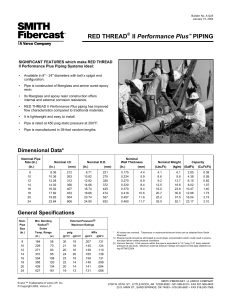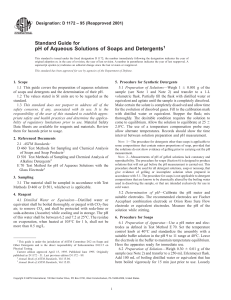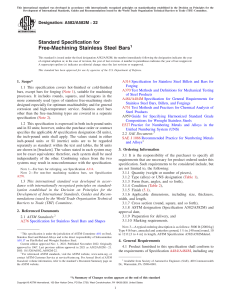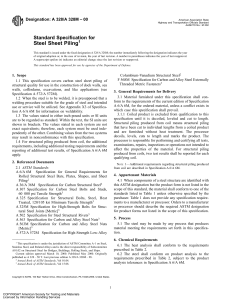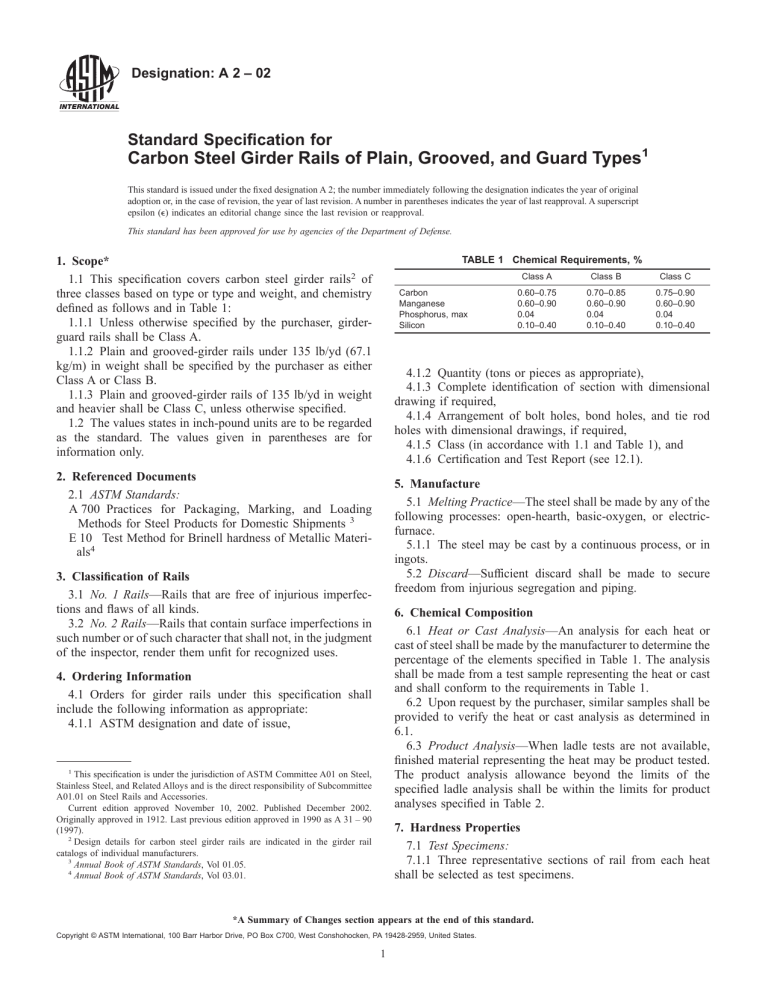
Designation: A 2 – 02 Standard Specification for Carbon Steel Girder Rails of Plain, Grooved, and Guard Types1 This standard is issued under the fixed designation A 2; the number immediately following the designation indicates the year of original adoption or, in the case of revision, the year of last revision. A number in parentheses indicates the year of last reapproval. A superscript epsilon (e) indicates an editorial change since the last revision or reapproval. This standard has been approved for use by agencies of the Department of Defense. TABLE 1 Chemical Requirements, % 1. Scope* 1.1 This specification covers carbon steel girder rails2 of three classes based on type or type and weight, and chemistry defined as follows and in Table 1: 1.1.1 Unless otherwise specified by the purchaser, girderguard rails shall be Class A. 1.1.2 Plain and grooved-girder rails under 135 lb/yd (67.1 kg/m) in weight shall be specified by the purchaser as either Class A or Class B. 1.1.3 Plain and grooved-girder rails of 135 lb/yd in weight and heavier shall be Class C, unless otherwise specified. 1.2 The values states in inch-pound units are to be regarded as the standard. The values given in parentheses are for information only. Carbon Manganese Phosphorus, max Silicon Class A Class B Class C 0.60–0.75 0.60–0.90 0.04 0.10–0.40 0.70–0.85 0.60–0.90 0.04 0.10–0.40 0.75–0.90 0.60–0.90 0.04 0.10–0.40 4.1.2 Quantity (tons or pieces as appropriate), 4.1.3 Complete identification of section with dimensional drawing if required, 4.1.4 Arrangement of bolt holes, bond holes, and tie rod holes with dimensional drawings, if required, 4.1.5 Class (in accordance with 1.1 and Table 1), and 4.1.6 Certification and Test Report (see 12.1). 2. Referenced Documents 2.1 ASTM Standards: A 700 Practices for Packaging, Marking, and Loading Methods for Steel Products for Domestic Shipments 3 E 10 Test Method for Brinell hardness of Metallic Materials4 5. Manufacture 5.1 Melting Practice—The steel shall be made by any of the following processes: open-hearth, basic-oxygen, or electricfurnace. 5.1.1 The steel may be cast by a continuous process, or in ingots. 5.2 Discard—Sufficient discard shall be made to secure freedom from injurious segregation and piping. 3. Classification of Rails 3.1 No. 1 Rails—Rails that are free of injurious imperfections and flaws of all kinds. 3.2 No. 2 Rails—Rails that contain surface imperfections in such number or of such character that shall not, in the judgment of the inspector, render them unfit for recognized uses. 6. Chemical Composition 6.1 Heat or Cast Analysis—An analysis for each heat or cast of steel shall be made by the manufacturer to determine the percentage of the elements specified in Table 1. The analysis shall be made from a test sample representing the heat or cast and shall conform to the requirements in Table 1. 6.2 Upon request by the purchaser, similar samples shall be provided to verify the heat or cast analysis as determined in 6.1. 6.3 Product Analysis—When ladle tests are not available, finished material representing the heat may be product tested. The product analysis allowance beyond the limits of the specified ladle analysis shall be within the limits for product analyses specified in Table 2. 4. Ordering Information 4.1 Orders for girder rails under this specification shall include the following information as appropriate: 4.1.1 ASTM designation and date of issue, 1 This specification is under the jurisdiction of ASTM Committee A01 on Steel, Stainless Steel, and Related Alloys and is the direct responsibility of Subcommittee A01.01 on Steel Rails and Accessories. Current edition approved November 10, 2002. Published December 2002. Originally approved in 1912. Last previous edition approved in 1990 as A 31 – 90 (1997). 2 Design details for carbon steel girder rails are indicated in the girder rail catalogs of individual manufacturers. 3 Annual Book of ASTM Standards, Vol 01.05. 4 Annual Book of ASTM Standards, Vol 03.01. 7. Hardness Properties 7.1 Test Specimens: 7.1.1 Three representative sections of rail from each heat shall be selected as test specimens. *A Summary of Changes section appears at the end of this standard. Copyright © ASTM International, 100 Barr Harbor Drive, PO Box C700, West Conshohocken, PA 19428-2959, United States. 1 A 2 – 02 TABLE 2 Product Analysis—Allowance Beyond Limits of Specified Chemical Analysis Carbon Manganese Phosphorus Silicon A Allowance Under Minumum Limit, % Allowance Over Maximum Limit, % 0.04 0.06 ... 0.02 0.04 0.06 0.008 0.02A 8.3.3 Standard 39-ft lengths with up to 11 % of the entire order in lengths shorter than standard, varying by 1 ft (0.3 m) from 38 to 24 ft (11.6 to 7.3 m) may be specified; or 8.3.4 Length variations other than those described in 8.3.3 may be established by agreement between the purchaser and manufacturer. 8.3.5 A variation of 7⁄16 in. (11 mm) from the specified length of individual rails will be permitted. 8.4 End Finish: 8.4.1 Rails shall be milled, abrasive wheel cut, or ground to length, with a variation in end squareness of not more than 1⁄32 in. (0.8 mm) allowed. 8.4.2 Harmful burrs on the ends shall be removed. 8.5 Drilling: 8.5.1 Circular holes for joint bar bolts, bonds, and tie rods shall be drilled to conform to the drawings and dimensions furnished by the purchaser and within the following permissible variations: 8.5.2 The diameter of bolt holes shall not vary more than 1⁄16 in. (1.6 mm) over and 0 in. under that specified. The diameter of bond holes shall not be over the size specified, but may be 1⁄32 in. (0.8 mm) under. The diameter of the tie rod holes shall not be less than that specified but may be 1⁄16 in. (1.6 mm) over. 8.5.3 The location of bolt and bond holes shall not vary more than 1⁄16 in. (1.6 mm), either longitudinally or vertically from that specified. The location of the tie rod holes shall not vary more than 1⁄4 in. (6.35 mm) vertically and not more than 1⁄2 in. (12.7 mm) longitudinally from that specified. 8.5.4 Bond holes shall be truly cylindrical and not conical. 8.5.5 Harmful fins and burrs at the edges of holes shall be removed. 8.6 Punching—Unless otherwise specified by the purchaser, the tie rod holes in Class A rails may be punched, and, when so made, they shall be free of burrs, fins, etc. Punched tie rod holes shall not be less in diameter than specified, but may be not more than 1⁄8 in. (3.2 mm) over size. Continuously cast allowances shall be 0.05 % over maximum for silicon. 7.1.2 Excess scale and decarburization shall be removed from the test area of the head or web of the selected specimens. 7.2 Procedure: 7.2.1 1 The test shall be conducted in accordance with Test Method E 10. 7.3 Requirements: 7.3.1 Class A rail shall have a Brinell hardness of 248 to 293, and Classes B and C shall have hardnesses of 269 to 321. 7.4 Retests—If the average depth of the impressions obtained on the head of the three specimens from any heat fails to conform to the requirements specified in 7.3, the manufacturer may at his option retest the specimens, or each rail from that heat. Rails represented by retests which conform to the requirements of 7.3 shall be accepted. 8. Permissible Variations of Dimension, Weight, and Other Physical Attributes 8.1 Section: 8.1.1 The section of the rail shall conform to the design specified by the purchaser. 8.1.2 A variation of 1⁄64 in. (0.4 mm) less or 1⁄32 in. (0.8 mm) greater than the specified height will be permitted. 8.1.3 A variation of 1⁄8 in. (3.2 mm) from the specified overall width of the head and tram will be permitted, but any variation that would affect the gage line more than 1⁄32 in. (0.8 mm) will not be permitted. 8.1.4 The overall width of the base shall not vary under that specified more than 1⁄8 in. (3.2 mm) for widths less than 61⁄2 in. (165 mm), 3⁄16 in. (4.8 mm) for a width of 61⁄2 in., and 1⁄4 in. (6.35 mm) for a width of 7 in. (178 mm). 8.1.5 No variation will be permitted in dimensions affecting the fit of the joint bars, except that the fishing template approved by the purchaser may stand out laterally not more than 3⁄32 in. (2.4 mm). 8.1.6 The base of the rail shall be at right angles to the web, and the convexity shall not exceed 1⁄32 in. (0.8 mm). 8.1.7 When necessary, because of the type of track construction, and notice to that effect has been given to the manufacturer, the position of the gage line with respect to the outer edge of the base shall not vary more than 3⁄64 in. (1.2 mm). 8.2 Weight—The weight of the rails per yard as calculated, shall be maintained as nearly as possible after conforming to the requirements specified in 8.1. 8.3 Length: 8.3.1 Unless otherwise specified, the standard length of rail shall be 39 ft (11.9 m) where measured at a temperature of 60°F (15°C). 8.3.2 All standard 39-ft lengths may be specified; or 9. Workmanship, Finish, and Appearance 9.1 Rails shall be straightened cold in a press or roller machine to remove twists, waves, and kinks. 9.2 Deviations in the vertical and horizontal alignment throughout the length of the rail shall be uniform. Sharp deviations in either direction shall not be acceptable. 9.3 Straightness shall be assessed by visual inspection. 10. Inspection 10.1 The manufacturer shall afford the purchaser’s inspector all reasonable facilities necessary to satisfy him that the material is being produced and furnished in accordance with this specification. Mill inspection by the purchaser shall not interfere unnecessarily with the manufacturer’s operations. All tests and inspections shall be made at the place of manufacture, unless otherwise agreed to. 11. Rejection and Rehearing 11.1 Material that fails to conform to the requirements of this specification may be rejected. Rejections shall be reported to the manufacturer or supplier promptly and in writing. In case 2 A 2 – 02 14.1.1 The name or brand of the manufacturer, the year and month of manufacture, the weight of the rail, and the section number, shall be legibly rolled in raised letters and figures on the web. 14.1.2 The heat number shall be legibly stamped on each rail where it will not be covered subsequently by the joint bars. 14.2 Paint Marking: 14.2.1 No. 2 rails shall be paint-marked white. 14.2.2 No. 1 rails less than 39 ft (11.9 m) long shall be paint-marked green. 14.2.3 Paint-marking shall be located on the top of the head at one end only, at least 3 ft (0.9 m) from the end. 14.3 Bar Coding: 14.3.1 The automotive Industry Action Group (AIAG) Bar Code Standard for Primary Metals for Steel Products may be considered as a possible auxiliary method of identification. Use of this method shall be by agreement between purchaser and supplier. of dissatisfaction with the test results, the manufacturer or supplier may make claim for a rehearing. 12. Certification 12.1 When specified in the purchase order or contract, a manufacturer’s certification shall be furnished to the purchaser that the material was produced and tested in accordance with this specification and has been found to meet the requirements. 12.2 When specified in the purchase order or contract, a report of the chemical and mechanical test results shall be furnished. 12.3 A Material Test Report, Certificate of Inspection, or similar document printed from or used in electronic form from and electronic data interchange (EDI) transmission shall be regarded as having the same validity as a counterpart printed in the certifier’s facility. The content of the EDI transmitted document must meet the requirements of the invoked ASTM standard(s) and conform to any existing EDI agreement between the purchaser and the supplier. 12.4 Notwithstanding the absence of a signature, the organization submitting either a printed document (Material Test Report, Certificate of Inspection or similar document) or and EDI transmission is responsible for the content of the report. 15. Loading 15.1 Rails shall be handled carefully to avoid damage. 15.2 Rails shall be placed together according to class in loading. 15.3 Rails shall be paired as to length before shipment. 13. Acceptance 13.1 In order to be accepted, the rails offered shall fulfill all the requirements of this specification. 13.2 No. 2 rails to the extent of 10 % of the whole order will be accepted. 16. U.S. Government Procurement 16.1 When specified in the contract or purchase order, material shall be prepared for shipment and storage in accordance with the requirements of Practices A 700. 17. Keywords 17.1 girder rails; rails; railway applications; steel rails 14. Product Marking 14.1 Branding and Stamping: SUMMARY OF CHANGES (4) Added EDI language in Section 12. (5) Added bar coding language in Section 14. (6) Deleted reference to military standard deleted in Section 16. (1) Military standard references deleted in Section 2. (2) Edited footnotes on page 1. (3) Changed hardness spec. to an ASTM specification in Section 7. ASTM International takes no position respecting the validity of any patent rights asserted in connection with any item mentioned in this standard. Users of this standard are expressly advised that determination of the validity of any such patent rights, and the risk of infringement of such rights, are entirely their own responsibility. This standard is subject to revision at any time by the responsible technical committee and must be reviewed every five years and if not revised, either reapproved or withdrawn. Your comments are invited either for revision of this standard or for additional standards and should be addressed to ASTM International Headquarters. Your comments will receive careful consideration at a meeting of the responsible technical committee, which you may attend. If you feel that your comments have not received a fair hearing you should make your views known to the ASTM Committee on Standards, at the address shown below. This standard is copyrighted by ASTM International, 100 Barr Harbor Drive, PO Box C700, West Conshohocken, PA 19428-2959, United States. Individual reprints (single or multiple copies) of this standard may be obtained by contacting ASTM at the above address or at 610-832-9585 (phone), 610-832-9555 (fax), or [email protected] (e-mail); or through the ASTM website (www.astm.org). 3
